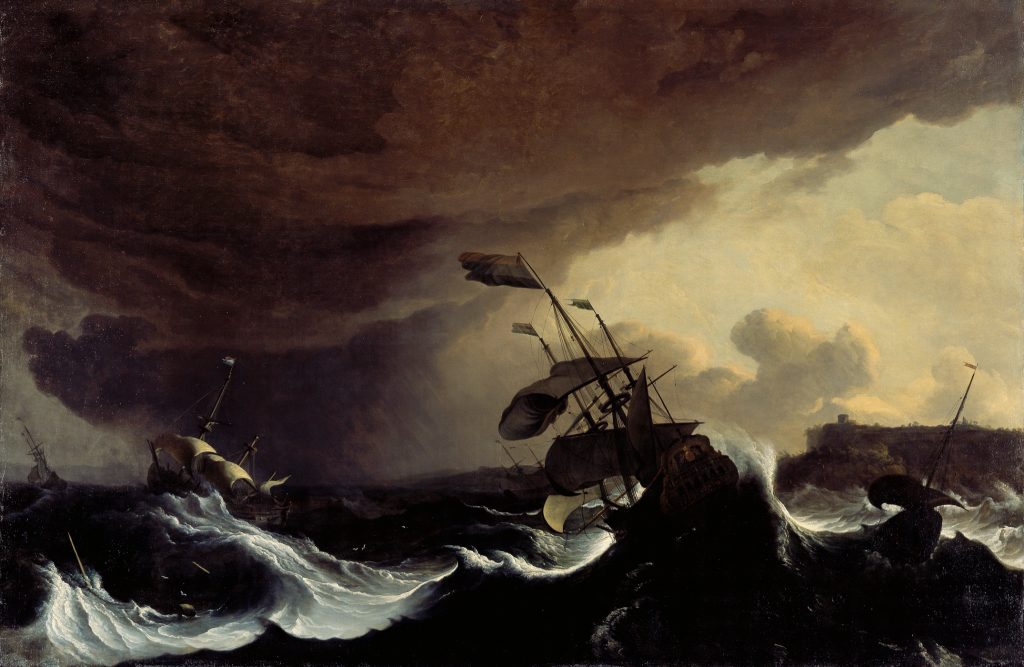Vocabulary
Abiotic factors: all nonliving elements in an ecosystemBiotic factors: all living factors in an ecosystemEcosystem: the relationship between the living and nonliving factors in an area functioning as a unitWater cycle, evaporation, condensation, precipitation
Materials
Hot plate, steel pan with lid, poster paper and poster boards, yarn, colored pencils, acrylic paint, watercolors, crayons, old magazines, fabric scraps, glue sticks.
Links
Image of Ships in a Stormy Sea off a Coast
Painting techniques and samples
Water cycle diagrams
World Book Web site
